
How to save tomato seeds
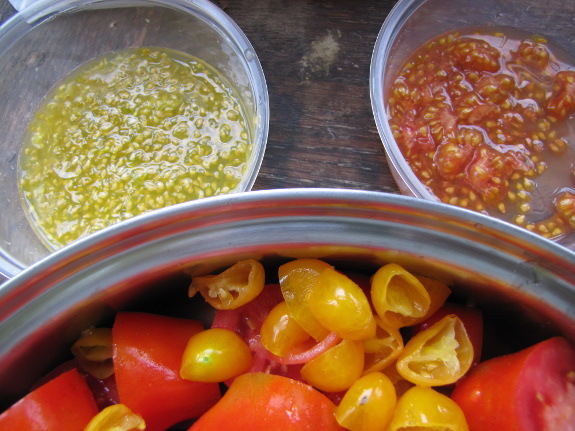
I've touched on saving
tomato seeds before, but realized I'd never made a real post on the
topic. Since I like to save tomato seeds as early as possible in
the year to make it less likely 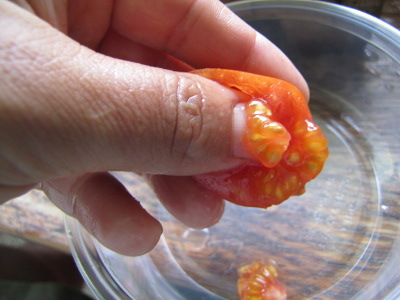 that fungi will hitchhike
into next year's garden via seed packets, I thought now would be a good
time to remind you all to get out there and save some seeds!
that fungi will hitchhike
into next year's garden via seed packets, I thought now would be a good
time to remind you all to get out there and save some seeds!
I wrote in great depth
about hybridization issues in Weekend
Homesteader: September,
so I won't repeat that information here. The short version is:
tomato-leaf tomatoes very seldom cross-pollinate, but currant tomatoes
and potato-leaf tomatoes do cross-pollinate with plants within the same
group. So, if your garden contains ten varieties of tomato-leaf
tomatoes, one potato-leaf tomato, and one currant tomato, you can save
seeds from all of them without getting unintentional hybrids.
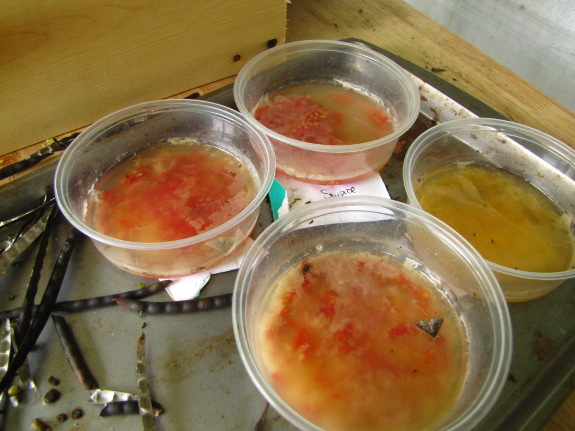
Inbreeding depression (a
fancy name for the effect you see if you marry your brother) is much
less of a problem in tomatoes than in other plants, but I do try to
pluck at least two fruits from different plants in each variety to keep
genetic diversity as high as possible. Then I head back to the
kitchen to squeeze the guts out of each tomato, setting the flesh aside
to be turned into soup or sauce.
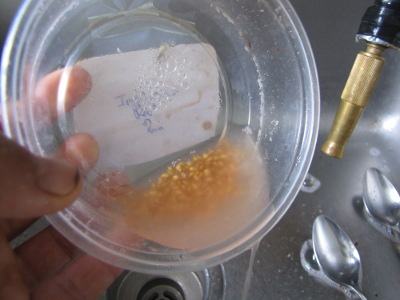 Tomatoes and cucumbers are relatively unique
because the seeds are enclosed in gelatinous sacs that need to be
fermented away before the seed can sprout. The process is a bit
smelly, but is otherwise very easy. Just add about an inch or two
of water to each small container of tomato seeds, then set it aside for
a week or so. Soon, you'll see mold forming on top of or in the
liquid, and the whole thing will start to stink. (Mark was
thrilled that I was able to ferment my tomato seeds on the porch this
year rather than on top of the fridge.) That's your sign that
your tomato seeds are ready to process and dry.
Tomatoes and cucumbers are relatively unique
because the seeds are enclosed in gelatinous sacs that need to be
fermented away before the seed can sprout. The process is a bit
smelly, but is otherwise very easy. Just add about an inch or two
of water to each small container of tomato seeds, then set it aside for
a week or so. Soon, you'll see mold forming on top of or in the
liquid, and the whole thing will start to stink. (Mark was
thrilled that I was able to ferment my tomato seeds on the porch this
year rather than on top of the fridge.) That's your sign that
your tomato seeds are ready to process and dry.
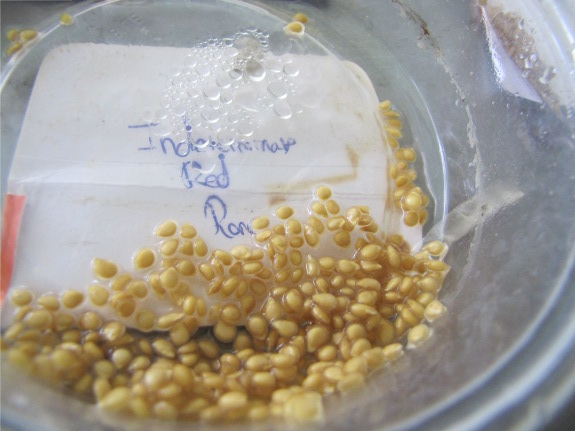
The simplest way to
separate seeds from moldy water is to add some more water, stir with a
spoon, let the tomato seeds settle back to the bottom of the container,
then pour off the foul liquid. I fill the container back up with
water two or three times to rinse off the seeds, then they're ready to
dry. If processed correctly, the seeds will look pale and fuzzy
within twenty-four hours, at which point you can put them in packets
for next year's garden.
Want more in-depth information? Browse through our books.
Or explore more posts by date or by subject.
About us: Anna Hess and Mark Hamilton spent over a decade living self-sufficiently in the mountains of Virginia before moving north to start over from scratch in the foothills of Ohio. They've experimented with permaculture, no-till gardening, trailersteading, home-based microbusinesses and much more, writing about their adventures in both blogs and books.
Want to be notified when new comments are posted on this page? Click on the RSS button after you add a comment to subscribe to the comment feed, or simply check the box beside "email replies to me" while writing your comment.
- Remove comment
- Remove comment
- Remove comment
